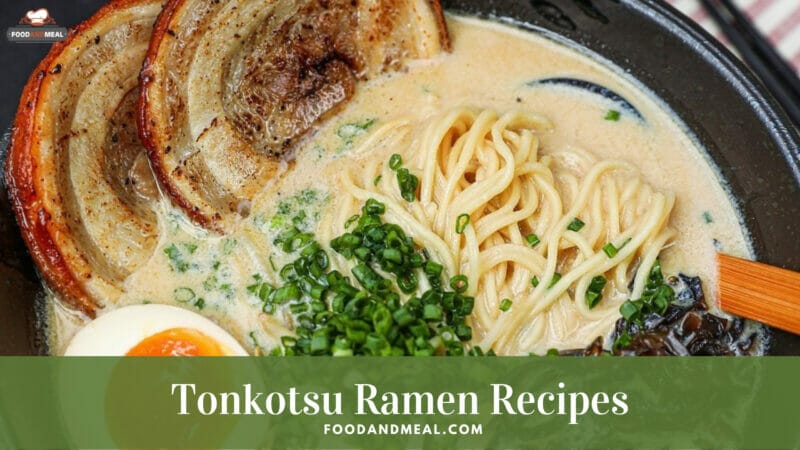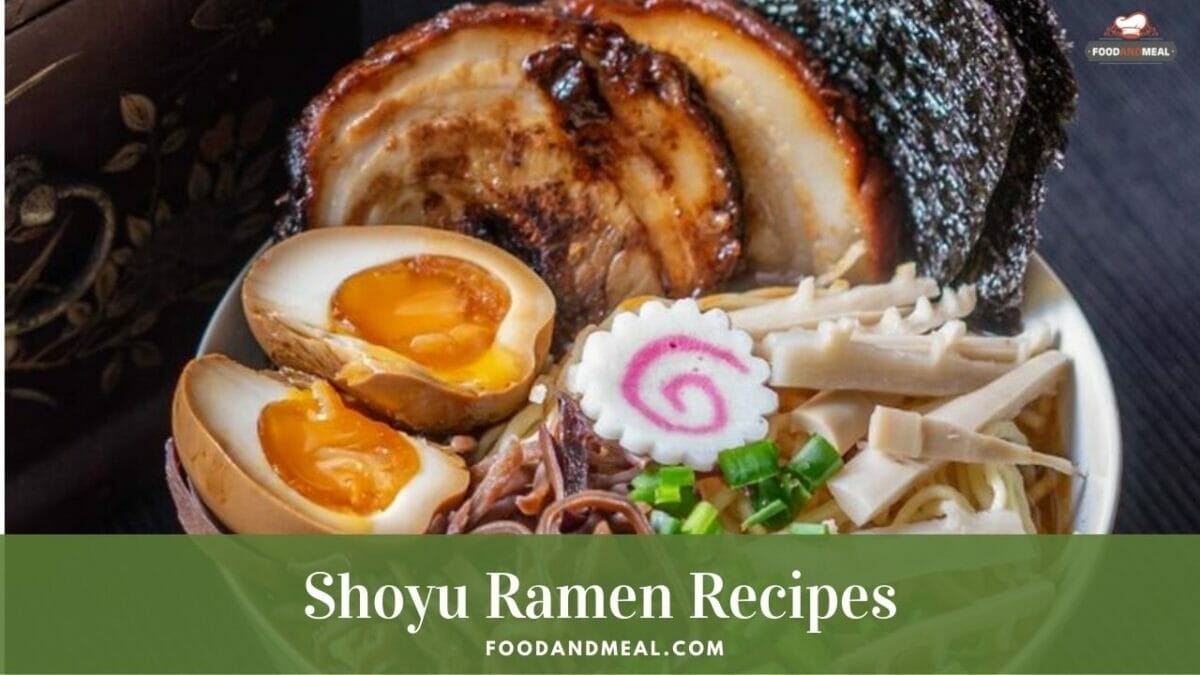Craving ramen? Learn the Difference between tonkotsu and shoyu ramen to satisfy your noodle curiosity. Dive into the flavors with our guide!
As a lover of all things ramen, I’ve always been fascinated by the subtle yet impactful differences between the various broths that form the foundation of this iconic noodle soup. My personal journey into the world of ramen recipes led me to develop a special appreciation for two broths in particular – the rich, creamy tonkotsu made from pork bones, and the classic shoyu made from soy sauce.
Though both deliver that soul-warming umami flavor I crave, they each have their own unique charm. Whenever I slurp up a bowl of tonkotsu, I’m transported back to my travels in Japan, vividly remembering the cozy ramen joints filled with salarymen seeking comfort after a long day’s work. The thick, cloudy white broth is like a big warm hug, the fatty pork melting on my tongue. Shoyu on the other hand brings back memories of my mom’s homemade ramen, the tangy brown broth made using her secret family recipe passed down through generations.
As my obsession with ramen has grown over the years, I’ve been itching to dig deeper into the key differences between these two broths – to understand what makes them special in their own right. What better way than to channel my curiosity into a blog post for other noodle enthusiasts like myself! I’d love to highlight the ingredients, techniques and flavor profiles that set tonkotsu and shoyu apart. Most importantly, I want to inspire readers to try making both broths at home, so they can taste firsthand what makes each one so magical. This will be a fun, personal exploration into two ramen broths close to my heart. I hope you’ll join me on this tasty journey!
What is tonkotsu ramen ?
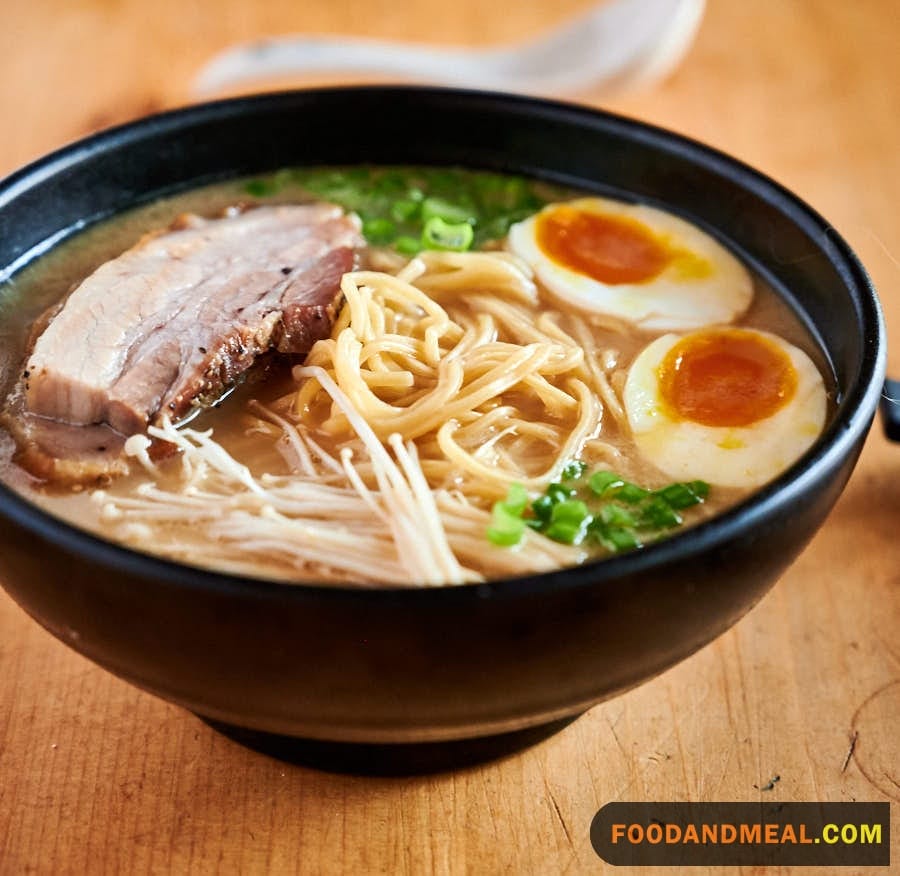
Tonkotsu ramen is a Japanese noodle soup made with a rich, creamy pork bone broth. It originated in the Fukuoka region of Kyushu, Japan and has become one of the most popular ramen styles both in Japan and internationally.
The key ingredient that sets tonkotsu ramen apart is its broth, which is made by simmering pork bones, fat, and collagen over high heat for many hours. This intense boiling breaks down the bones and connective tissues, releasing a milky white broth that is rich, thick, and carries a profound pork flavor. It’s this heavy use of pork bones that gives tonkotsu its name, as “ton” means pig and “kotsu” means bones.
I first tried tonkotsu on a trip to Fukuoka several years ago and was blown away by the rich, meaty flavor packed into the steaming bowl. The broth coated each noodle strand, enveloping my senses with porky goodness in every slurp. It was so thick and creamy, almost like sipping liquid meat! Now whenever I crave some true comfort food, tonkotsu ramen always does the trick
Summary, The key things to know about tonkotsu ramen are:
- It is made with a thick, creamy, pork bone broth that simmers for many hours, made by boiling pork bones, fat, and collagen. This gives it a rich, milky white color and intense pork flavor.
- The name “tonkotsu” means “pork bones” in Japanese – “ton” = pig, “kotsu” = bones.
- It originated in Fukuoka region of Kyushu, Japan and is now popular worldwide.
- The broth is the star of tonkotsu ramen. It coats the noodles and has a profound porky flavor and rich texture.
- Common toppings include chashu braised pork, marinated eggs, nori seaweed, and scallions. These complement the rich broth.
- It is considered a comfort food in Japan because of its hearty, meaty flavor. The broth is like liquid meat.
What is Shoyu Ramen ?
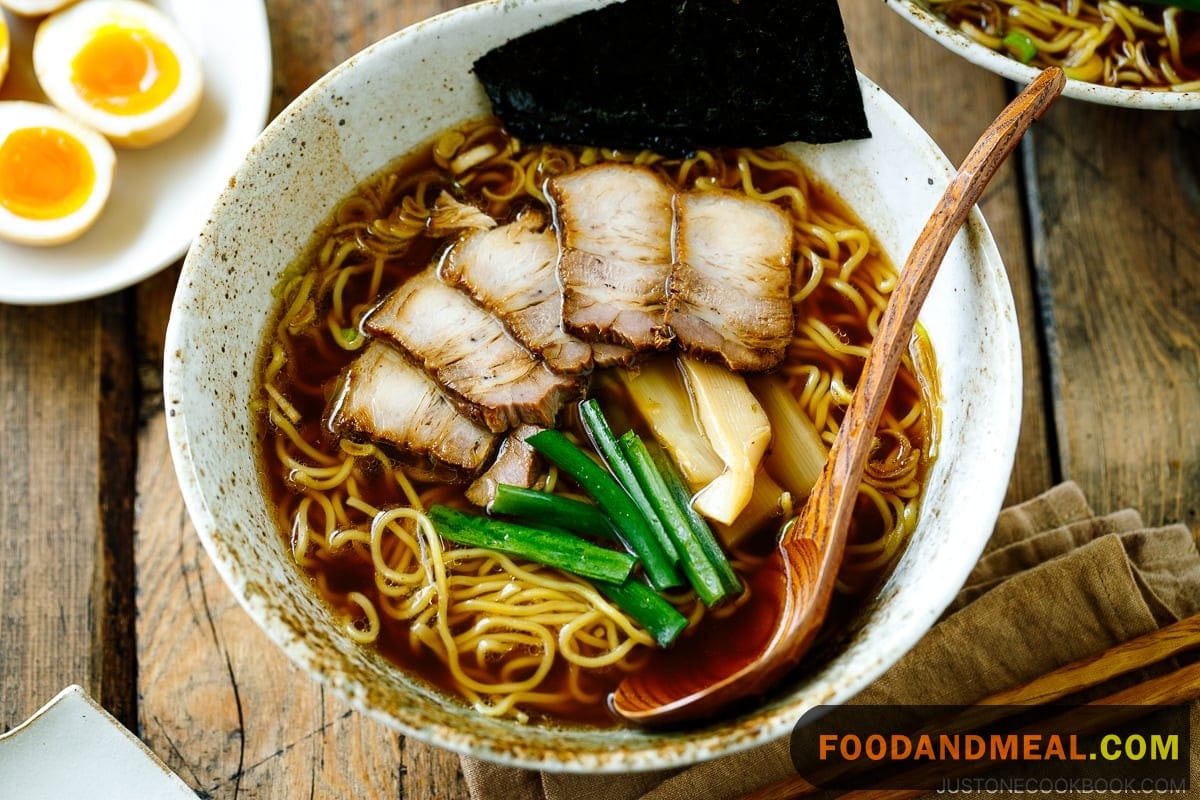
Shoyu ramen is a Japanese noodle soup made with a savory shoyu (soy sauce) broth. Along with tonkotsu, it is considered one of the two pillar ramen styles, beloved for its complex yet comforting flavors.
The base of shoyu ramen broth starts with chicken, vegetables, and dried fish or seaweed boiled for hours to extract maximum flavor. Then, soy sauce is added to impart a rich amber color and distinctive tangy-sweet taste. The resulting broth strikes a beautiful balance between salty and sweet, with subtle aromatic notes.
My earliest memories of ramen are of my grandmother making homemade shoyu ramen. I can still picture her standing over a giant pot, carefully stirring her special soy-seasoned broth passed down for generations. She would top the steaming bowls with slices of chashu roast pork, sweet corn, and a soft boiled egg. Nothing could match that soul-warming flavor! Now, a piping hot bowl of shoyu ramen never fails to make me feel cared for.
Summary,
The key things to know about shoyu ramen are:
- It has a savory shoyu (soy sauce) broth made from chicken, vegetables, dried fish and seaweed boiled for hours. Soy sauce is added for tangy-sweet flavor.
- Along with tonkotsu, it is considered one of the two pillar/major styles of ramen in Japan.
- The broth strikes a balance between salty, sweet, and aromatic flavors. The soy sauce gives it a rich amber color.
- Common toppings include chashu roast pork, corn, boiled eggs, and scallions. These complement the complex broth.
- It’s a comforting, soul-warming noodle soup with nostalgic flavors for many Japanese people.
What are the key differences between Tonkotsu and Shoyu Ramen?
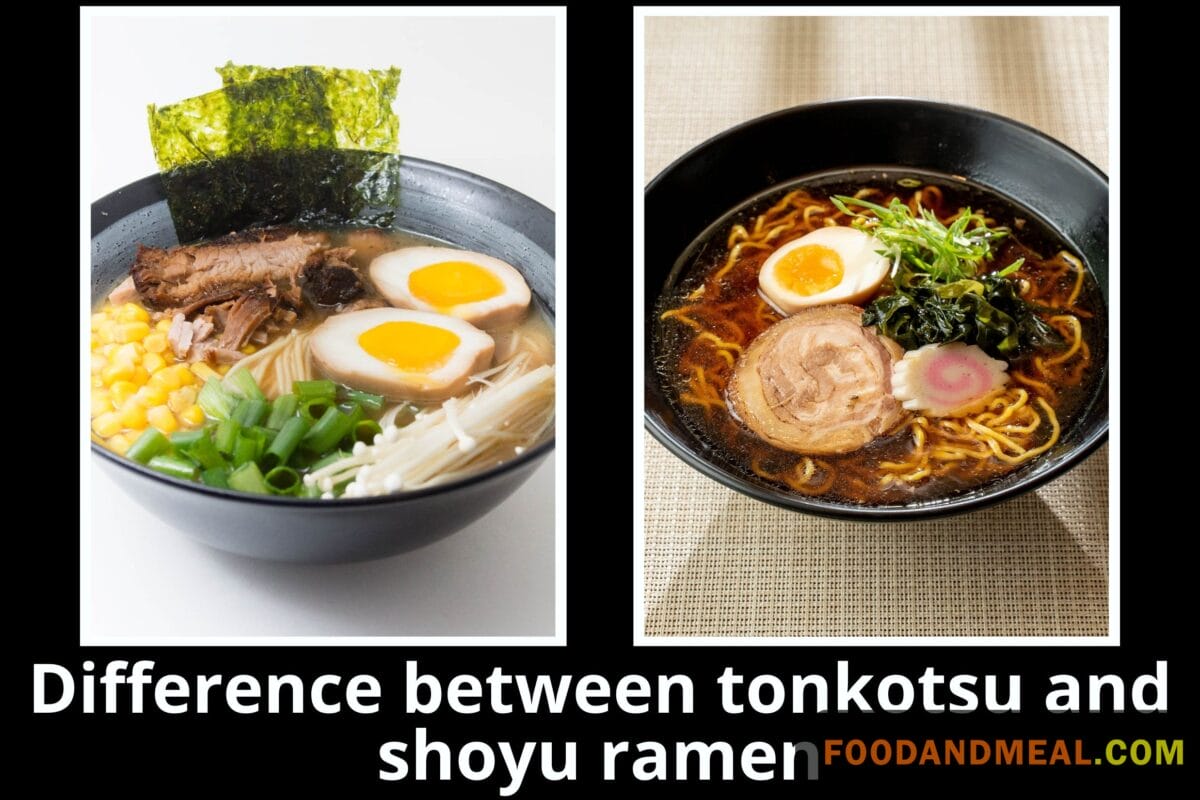
The main differences between shoyu and tonkotsu ramen are:
Broth:
- Shoyu has a clear, amber-colored broth made from chicken, vegetables, and seaweed boiled for hours then flavored with soy sauce. This gives it a tangy-sweet, salty flavor.
- Tonkotsu has a thick, cloudy white pork bone broth made by boiling pork bones for hours. This gives it a rich, creamy texture with intense pork flavor.
Origins:
- Shoyu originated as a Tokyo-style ramen. It has become popular throughout Japan and globally.
- Tonkotsu originated in Fukuoka/Kyushu region of Japan. It has also gained worldwide fame more recently.
Flavor Profile:
- Shoyu is characterized by a complex blend of salty, sweet, savory umami flavors with subtle aromatics.
- Tonkotsu overwhelms the palate with its intense porkiness, fat content, and rich mouthfeel. It packs a bigger umami punch.
Toppings:
- Shoyu often features pork belly chashu, marinated eggs, dried nori seaweed, corn kernels, and scallions.
- Tonkotsu usually comes with fatty pork belly or shoulder chashu, marinated eggs, seared cabbage, and black garlic oil.
Summary
To wrap up, while shoyu and tonkotsu ramen may seem similar at first glance, they have distinct differences in their broth, ingredients, taste profiles and origins within Japanese food culture. Shoyu offers a harmonious blend of salty, sweet and savory flavors with a clear amber broth. Tonkotsu goes all-in on rich, fatty porkiness with its thick white bone broth.
Understanding these nuances can help ramen lovers select their ideal bowl! I encourage you to try both styles to taste the craftsmanship and care dedicated to perfecting these legendary noodle soups. Now if you’ll excuse me, I’m feeling inspired to enjoy a hot bowl of shoyu and tonkotsu, one right after the other.
Which one is more popular in Japan?
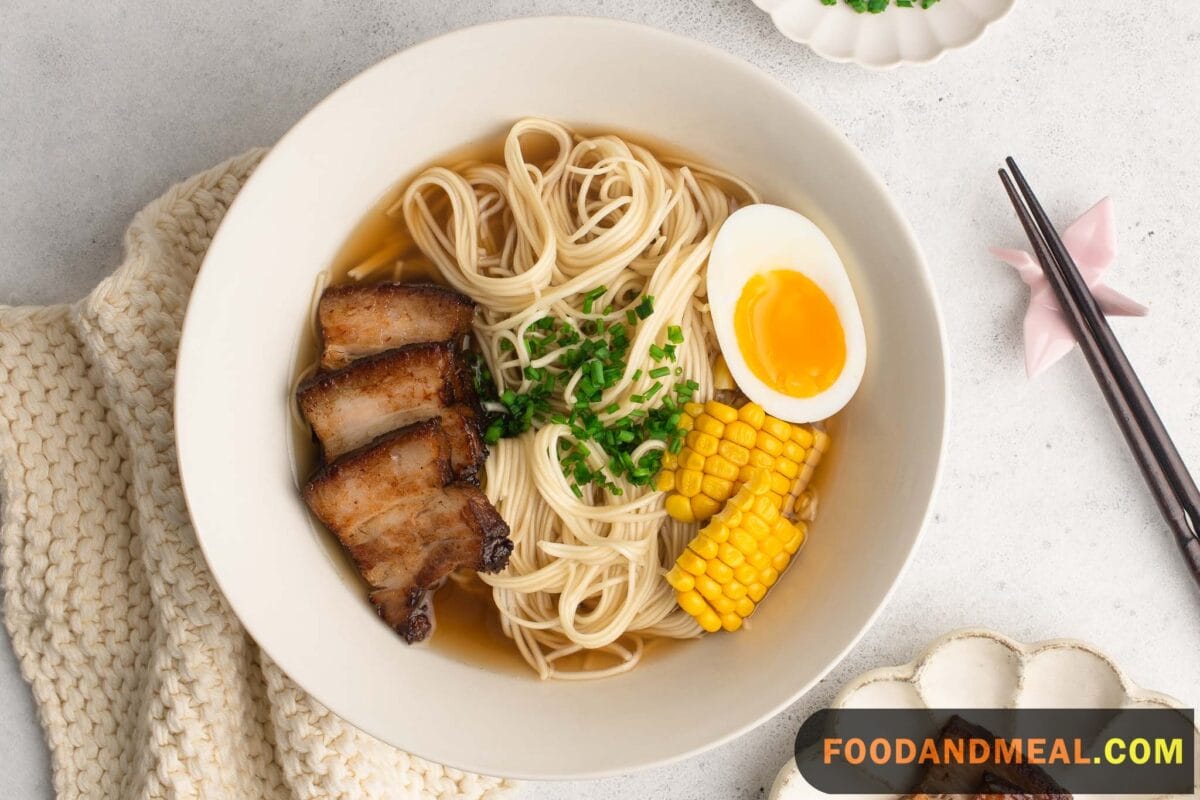
The popularity of Shoyu and Tonkotsu Ramen can vary greatly depending on the region in Japan. Shoyu Ramen, with its soy sauce-based broth, is a classic choice and has been a staple in Tokyo for many years, making it widely enjoyed across the nation. On the other hand, Tonkotsu Ramen, known for its rich pork bone broth, originated in Fukuoka and has a dedicated following, particularly in Kyushu.
In recent years, the creamy and hearty flavors of Tonkotsu Ramen have gained immense popularity and have seen a surge in specialty restaurants both within and outside of Japan. However, it’s important to note that regional preferences play a significant role, and what might be popular in one area may not hold the same status in another.
FAQs about Difference between tonkotsu and shoyu ramen
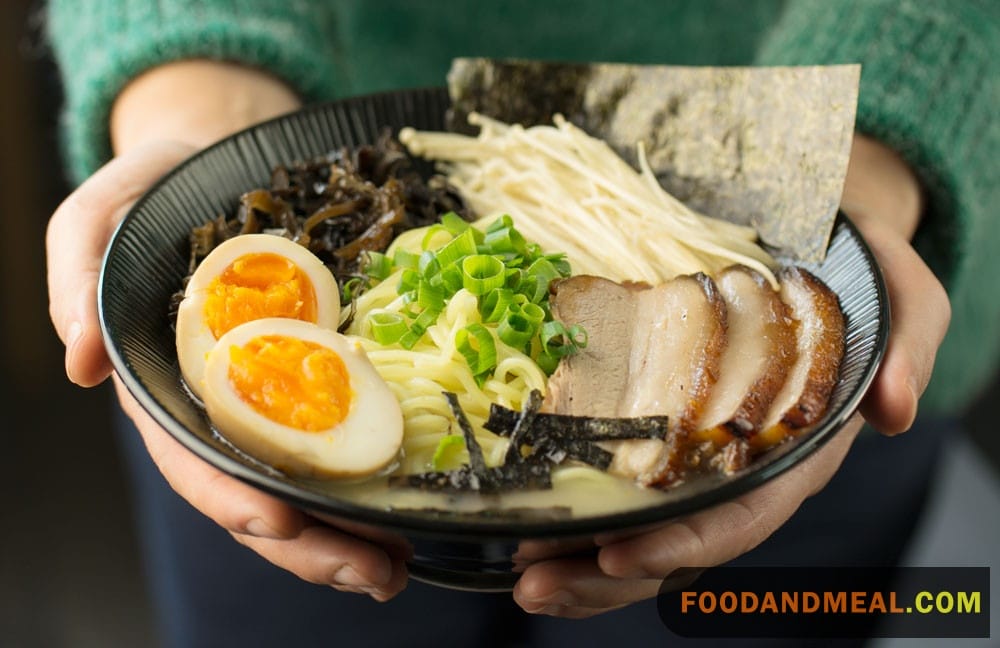
1. Are there any regional variations of these ramen types?
Conclution
In closing, while tonkotsu and shoyu ramen may seem similar at first glance, they each have their own distinct flavor profiles that reflect the care and craftsmanship inherent in Japanese food culture. Tonkotsu draws out the rich, umami flavors of pork bones, enveloping your senses with its thick, cloudy broth. Shoyu balances the sweet and salty flavors of soy sauce, with aromatic notes from dried fish and seaweed.
To me, they are both comforting yet complex, simple yet sophisticated. When I slurp up these legendary broths, I taste the stories of the master ramen chefs who dedicated their lives to perfecting the art of noodle soup making. Their attention to detail and tradition shines through in every spoonful.
I hope this Difference between tonkotsu and shoyu ramen post has inspired you to try making tonkotsu and shoyu ramen at home, using some of the tips and ingredients I highlighted. Though it may take some trial and error to get the broth just right, the journey itself is what makes ramen so special to me. Like life, it’s the people, places and memories we collect along the way that give our bowl of noodles its one-of-a-kind flavor. Now if you’ll excuse me, I’m off to enjoy another hot, steaming bowl!
I'm Tracy F Hilton, a devoted culinary professional shaped by a mix of natural aptitude and refined skills from a top culinary school. In the dynamic kitchen environment, I'm a catalyst for seamless operations and timely, high-quality dish preparation. My culinary creations are a blend of art and skill, offering visually and gustatorily delightful experiences. A learner at heart, I'm continuously honing my craft, embracing new techniques, and culinary innovations. My positive, collaborative nature is amplified in fast-paced settings, showcasing my commitment to team efficiency and guest satisfaction. Each dish I present is a meticulous blend of tradition and innovation, promising an unforgettable dining experience that marries taste, aroma, and aesthetic appeal in perfect harmony. Join me on a gastronomic journey where each bite encapsulates a rich, evolving narrative of flavors and culinary artistry.

